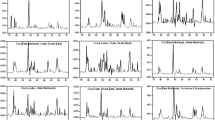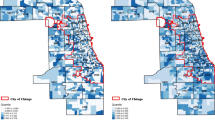Abstract
In a multivariate vector autoregression framework, this paper investigates the weak efficiency of the urban residential real estate market and the cause of weak efficiency. An error correction model is used to estimate long-term relationships among apartment prices and adjustment speed from disequilibrium to equilibrium. Based on a unique dataset of the Manhattan market, the efficiency of this market, seasonal stationarity of property prices, and the weak exogeneity of leading sub-markets are studied. Our results indicate that, in a market of less heterogeneity and higher transaction volumes, the weak efficiency hypothesis is rejected as in previous studies. This result implies that heterogeneity and lack of transaction information may not be the direct source of market inefficiency. Meanwhile, it is found that there are stable long-term relations among prices of different sub-markets. Interestingly, the price of one-bedroom co-operatives (co-op) is weakly exogenous. This implies that the starting co-op for most home buyers in urban areas is a leading indicator of the entire market, which contradicts the claim that high-end luxury co-op leads the market.
Similar content being viewed by others
References
Abraham, J. M., and P. H. Hendershott. (1996). “Bubbles in Metropolitan Housing Market,” Journal of Housing Research 7(2), 191–208.
Capozza, D. R., P. H. Hendershott, C. Mach, and C. J. Mayer. (2002). “Determinants of Real House Price Dynamics,” Technical Report, National Bureau of Economic Research, Cambridge, Massachusetts.
Cho, M. (1996). “Housing Price Dynamics: A Survey of Theoretical and Empirical Issues,” Journal of Housing Research 7(2), 145–172.
Doornik, J. A., and H. Hansen. (1994). “An Omnibus Test for Univariate and Multivariate Normality,” Technical Report, Nuffield College, Oxford.
Engle, R. F., and C. W. J. Granger. (1987). “Co-integration and Error Correction: Representation, Estimation, and Testing,” Econometrica 55, 251–276.
Fama, E. F. (1970). “Efficient Capital Markets: A Review of Theory and Empirical Work,” Journal of Finance 25, 383–420.
Godfrey, L. G. (1988). Misspecification Tests in Econometrics: The Lagrange Multiplier Principle and Other Approaches. Cambridge: Cambridge University Press.
Hannan, E. J., and M. Deistler. (1988). The Statistical Theory of Linear Systems. New York: John Wiley & Sons.
Hylleberg, S., R. Engle, C. Granger, and B. Yoo. (1990). “Seasonal Intergration and Cointegration,” Journal of Econometrics 44, 215–238.
Johansen, S. (1988). “Statistical Analysis of Cointegration Vectors,” Journal of Economic Dynamics and Control 12, 231–254.
Johansen, S. (1991). “Estimation and Hypothesis Testing of Cointegration Vectors in Gaussian Vector Autoregressive Models,” Journal of Econometrics 52, 389–402.
Johansen, S., and K. Juselius. (1992). “Testing Structural Hypotheses in a Multivariate Cointegration Analysis of the PPP and the UIP for U.K.,” Oxford Bulletin of Economics and Statistics 52, 169–210.
Johansen, S., and B. Nielsen. (1993). Asymptotics for Cointegration Rank Tests in the Presence of Intervention Dummies. Institute of Mathematical Statistics, University of Copenhagen.
Ljung, S., and G. Box. (1978). “On a Measure of Lack of Fit in Time Series Models,” Biometrika 65, 297–303.
Malpezzi, S. (1999). “A Simple Error Correction Model of Housing Prices,” Journal of Housing Economics 8, 27–62.
Meese, R., and N. Wallace. (1993). “Residential Housing Prices in the San Francisco Bay Area: New Test of Explanatory Power of Economic Fundamentals,” Technical Report, Hass School of Business, University of California, Berkeley.
Miller Samuel, Inc. (2002). Manhattan Residential Real Estate Market. 2002. New York City, New York.
Quinn, B. G. (1980). “Order Determination for a Multivariate Autoregression,” Journal of the Royal Statistical Society, B 42, 182–185.
Salama, J. J., M. H. Schill, and M. E. Stark. (2002). Reducing the Cost of New Housing Construction in New York City. School of Law, New York University.
Salins, P. D. (2002). “New York City's Housing Gap, Civic Report 2.” New York: Manhattan Institute for Policy Research.
Zhou, Z. (1997). “Forecasting Sales and Price for Existing Single-Family Homes: A VAR Model with Error Correction,” Journal of Real Estate Research 14(1/2), 155–167.
Author information
Authors and Affiliations
Rights and permissions
About this article
Cite this article
Wang, Z. Dynamics of Urban Residential Property Prices— A Case Study of the Manhattan Market. The Journal of Real Estate Finance and Economics 29, 99–118 (2004). https://doi.org/10.1023/B:REAL.0000027203.12175.90
Issue Date:
DOI: https://doi.org/10.1023/B:REAL.0000027203.12175.90




